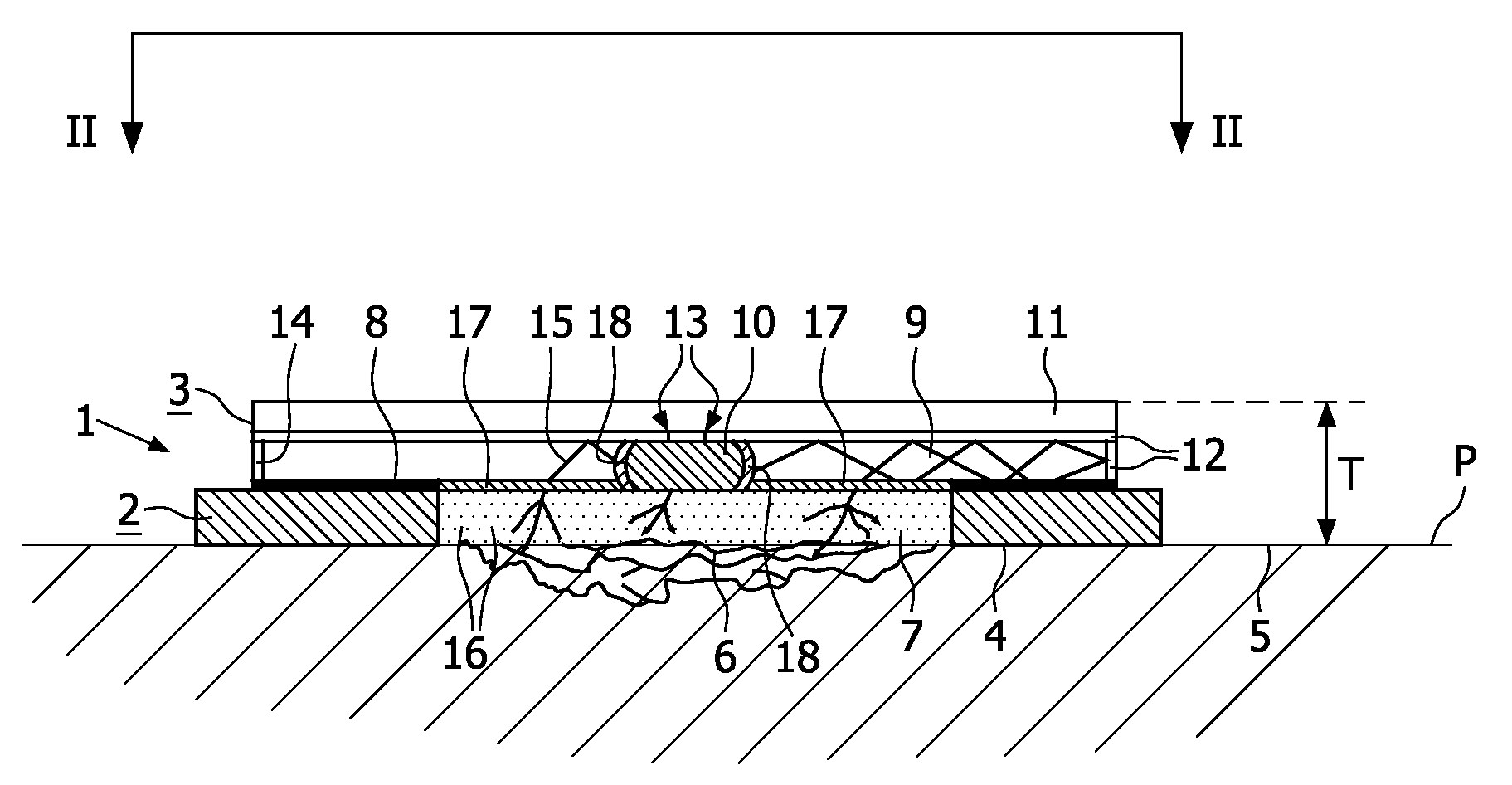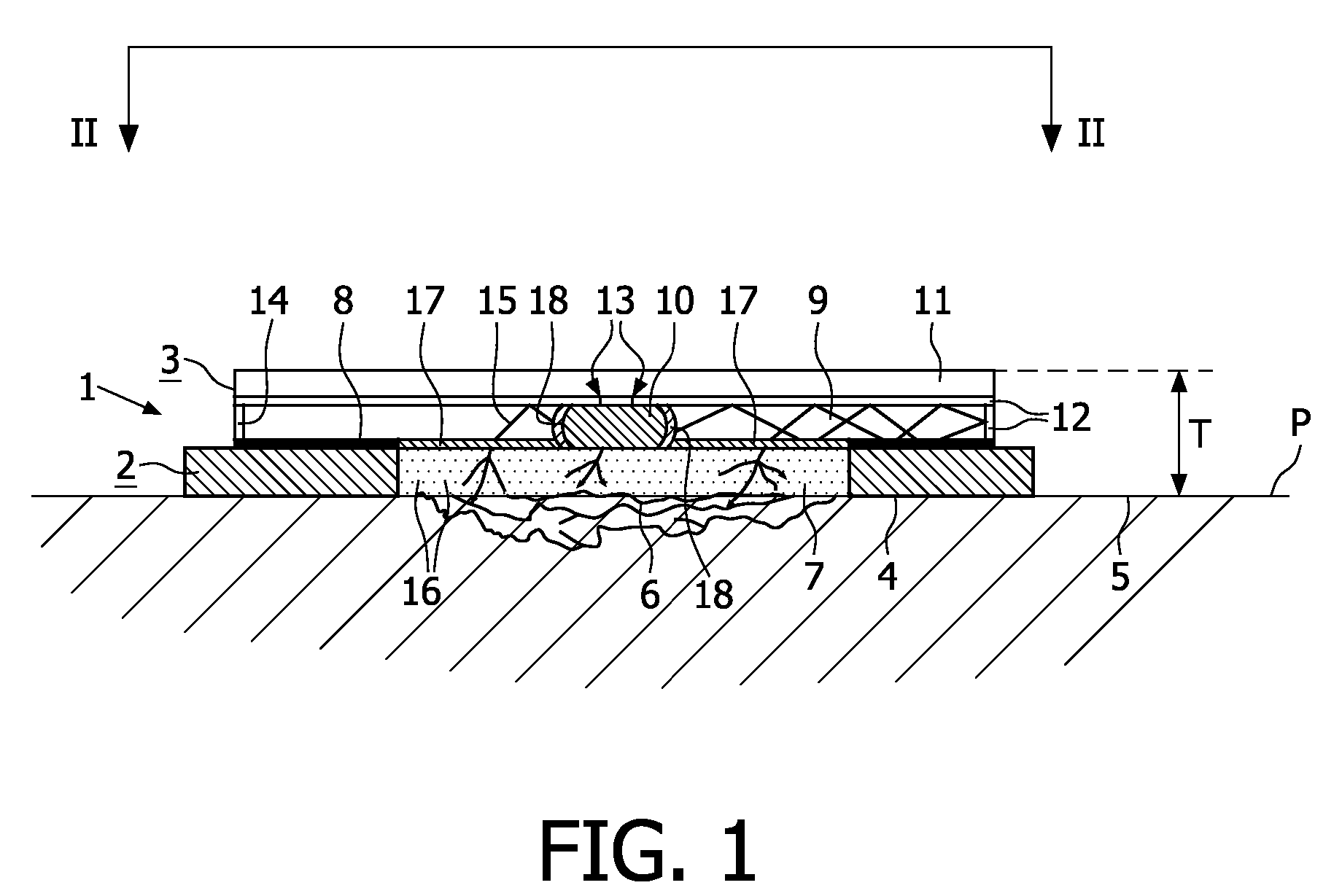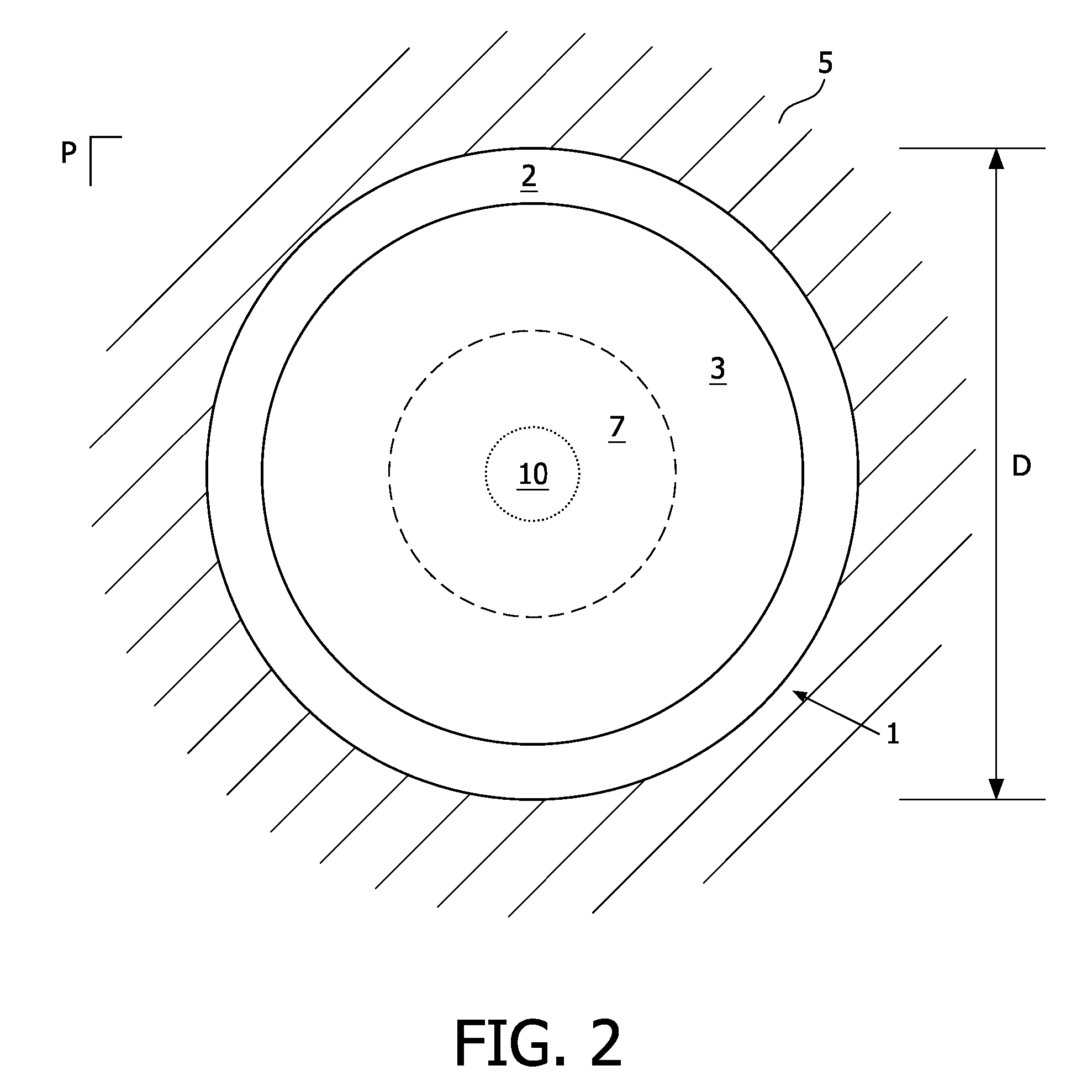System of plaster and radiation device
a radiation device and plaster technology, applied in radiation therapy, light therapy, therapy, etc., can solve the problems of discomfort for patients, less suitable construction for applications, and relatively uneven radiation distribution over the target area, so as to reduce the proportion of the system, and improve the wearability of the system.
- Summary
- Abstract
- Description
- Claims
- Application Information
AI Technical Summary
Benefits of technology
Problems solved by technology
Method used
Image
Examples
first embodiment
[0024]FIG. 1 shows a system 1 according to the invention. The system 1 comprises a plaster 2 and in a stacked position, i.e. on top of the plaster, a radiation device 3 is adhered to the plaster via a first adhesive 8. The system 1 is attached via a second adhesive 4 to a skin surface 5 of a human, the skin surface 5 defines a plane P. The skin surface is damaged having caused a wound which wound defines a target area 6, being the outer, top surface area of the wound. The target area 6 is covered with a radiation transmissible window 7 of the plaster 2. The radiation device 3 comprises a light-guide 9 which is in optical contact with the window 7 via a coupling medium 17 for example an optically transparent or translucent adhesive, or a coupling gel, for example a silicone gel, and which is edge-lit by a radiation source 10. The radiation source and the light-guide are in mutually optical contact at edge 18, but optical contact is no requirement. The radiation source 10 is electrica...
second embodiment
[0026]FIG. 3 shows a system 1 according to the invention, which system is adhered to the skin surface 5 of the skin of a human. The system 1 comprises a plaster 2 and in a stacked position, i.e. on top of the plaster, a radiation device 3 which is detachably connected to the plaster via Velcro 28. The radiation device comprises a cell battery as the energy source 11, electrically connected to a first LED 10a and a second LED 10b as the radiation sources 10. During operation the LEDs generate mutually different emission spectra, i.e. LED 10a generates UV-A radiation, i.e. radiation having a wavelength of about 360 nm, and LED 10b generates red light radiation having its peak wavelength in the range of about 610 to 660 nm. The LEDs are optically connected to a light-guide 9. A reflector 12, in the FIG. 3 a foil provided with a dichroic coating, is detachably stacked on top of the cell battery, the LEDs and the light-guide via an adhesive 29. The reflector is reflective for both visibl...
PUM
 Login to View More
Login to View More Abstract
Description
Claims
Application Information
 Login to View More
Login to View More - R&D
- Intellectual Property
- Life Sciences
- Materials
- Tech Scout
- Unparalleled Data Quality
- Higher Quality Content
- 60% Fewer Hallucinations
Browse by: Latest US Patents, China's latest patents, Technical Efficacy Thesaurus, Application Domain, Technology Topic, Popular Technical Reports.
© 2025 PatSnap. All rights reserved.Legal|Privacy policy|Modern Slavery Act Transparency Statement|Sitemap|About US| Contact US: help@patsnap.com



